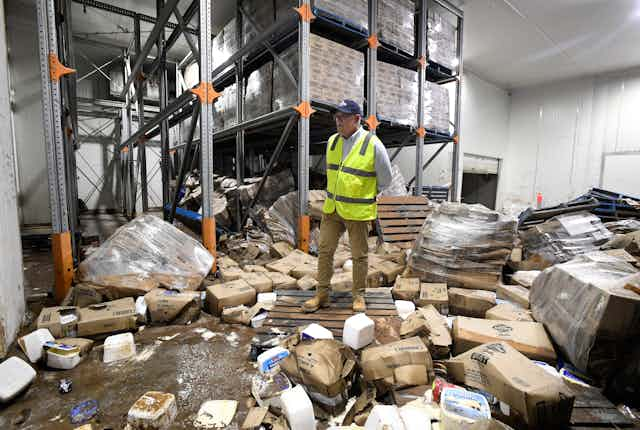Barnaby Joyce, in his usual blunt fashion, told a TV interviewer on Wednesday morning Scott Morrison would get a bad reception when he visited Lismore.
It was obvious. People are traumatised by what they’ve been through, and appalled at what they face to rebuild their lives.
Many feel angry and let down by government, state and federal. Rightly or wrongly, they think help from authorities – whether the state emergency services or the defence forces – didn’t arrive quickly enough, and too much of the initial rescue work had to be done by brave locals in their small boats.
Morrison’s appearance was always going to be a lightning rod for locals, with rowdy climate change and other demonstrators also in the mix.
But he (or his advisers) created unnecessary controversy by the decision to deny media access during part of his tour.
Morrison cited privacy. That explanation might have passed muster if everyone didn’t remember his unfortunate experience during the bushfires, when he was publicly and embarrassingly spurned during a visit to Cobargo.
The images have dogged him ever since. Whatever other motives they had, the Morrison team made every effort to ensure Wednesday wouldn’t produce footage that would come back to hurt him.
But by trying so blatantly to manage the pictures, Morrison’s conduct became an issue in the story. Sometimes it’s just better to face whatever music there might be.
The Prime Minister, accompanied by emergency management minister Bridget McKenzie, arrived in Lismore with an open wallet and a promise of more money to come.
Responding to some quite torrid questioning, he told a news conference he was moving to have the NSW and Queensland floods declared a national emergency, outlining what seemed the rather cumbersome process to do this.
The question was, why wasn’t this done days ago? Morrison said because the nature of the situation was different then.
The national emergency provision was brought in by the government after the bushfires and the subsequent royal commission. In that crisis, Morrison felt impeded by the lack of commonwealth power.
But on Wednesday he seemed to be playing down the importance of such a declaration.
“All this does is effectively remove some red tape when it comes to how commonwealth agencies are able to perform the duties in relation to this disaster,” he said.
“It doesn’t impact on the ADF resources. They’re already fully available. It doesn’t trigger any payments.”
The government is also now preparing to dip into its multi-billion disaster fund, something Labor has been urging for days.
The PM sought to show empathy and understanding of people’s frustrations. He put the latter in the context of what happens in times like this. “It is very common in natural disasters that there is frustration and anger, and the sense of abandonment.”
He pushed back sharply against any suggestion of criticism of the defence forces. “Don’t blame the ADF […] We won’t cop that.”
And he rejected the argument that too much of the rescue burden had fallen on ordinary citizens.
“There will be a community response in disasters […] because the community is already there,” he said. The defence forces were not “just waiting around the corner” when these things happened and it was “unrealistic” to think otherwise.
With climate change demonstrators protesting noisily in the street, Morrison acknowledged “we are dealing with a different climate to the one we were dealing with before. […] Australia is getting hard to live in because of these disasters.”
He also said it was “great” Australia had a commitment to net zero emissions by 2050 – as though the government hadn’t had to be dragged there, kicking and screaming, over years.
Morrison said that in such a crisis as these floods no amount of support was ever going to be enough. But “we are going to pull out every stop and every resource to ensure that we can meet it”.
It remains to be seen whether this will be the message that people take out from Wednesday’s visit – or whether it reinforces, albeit in a milder way, the negative impressions of Morrison’s handling of disasters that carry over from the bushfire days.

